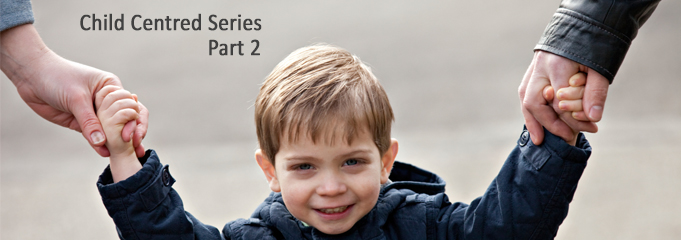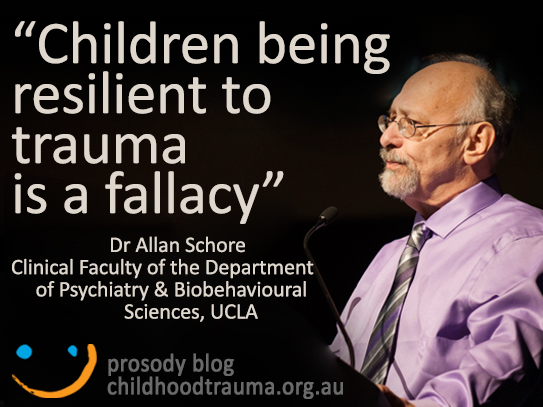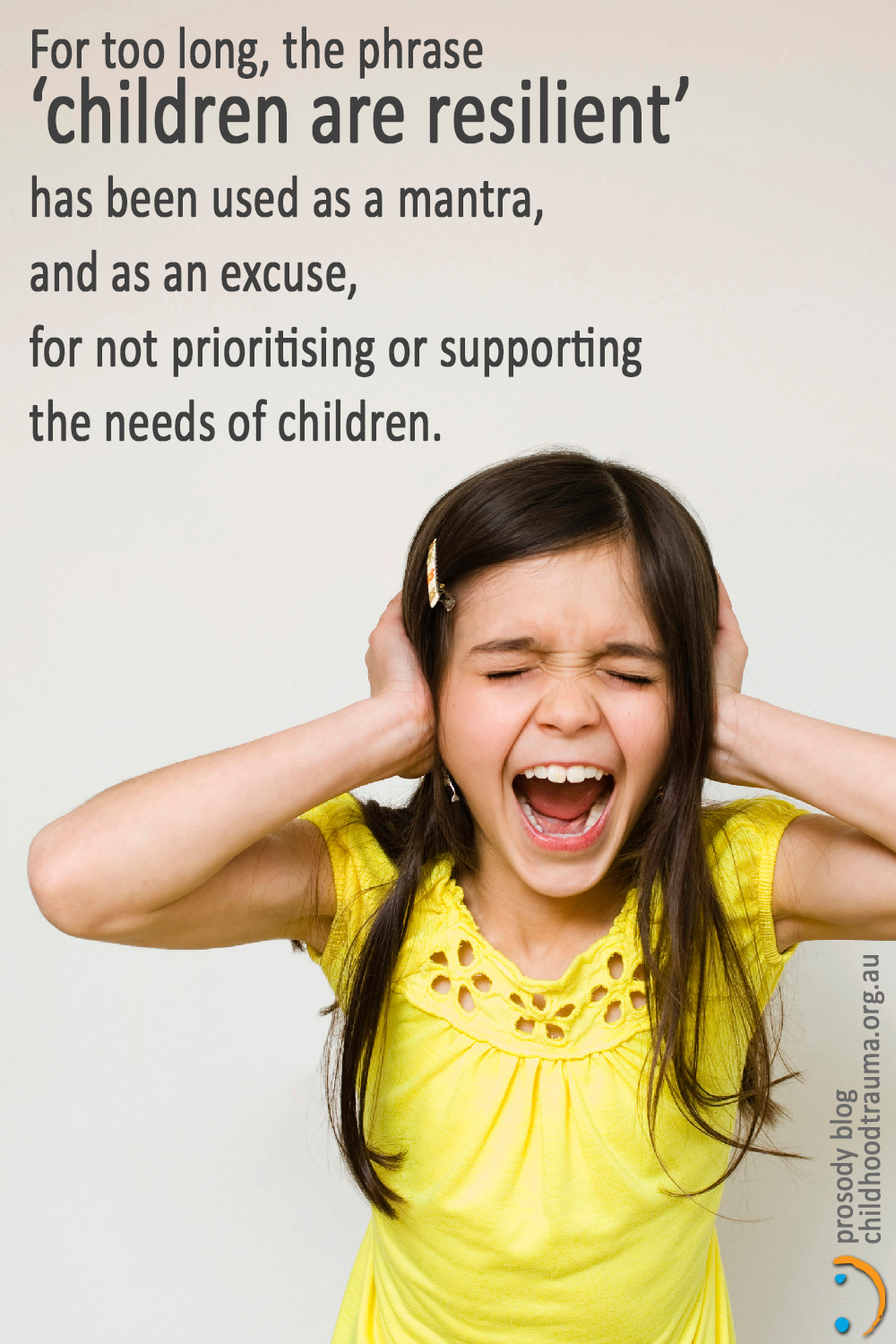
What does it mean to be Child Centred? Part 2

This article was authored by Lauren Thomas,
Online Professional Community Manager at the Australian Childhood Foundation.
Time frames for response, assessment and intervention in children’s services matter.
At the Foundation’s Childhood Trauma Conference last year, Allan Schore discussed how the quality of care received by a child affects their brain development (also Schore 2000). Schore rebutted the common phrase ‘Children are resilient’ with the following quote “The path of neuronal development is malleable – not resilient. Children being resilient to trauma is a fallacy.”
 This quote was shared and re-shared by many over the conference, and has continued to spark conversation over social media ever since. But what does this malleability in neuronal development mean for those of us who work in children’s services and welfare? One obvious implication of neuronal development being so affected by the environments children are raised in is that time frames are critical.
This quote was shared and re-shared by many over the conference, and has continued to spark conversation over social media ever since. But what does this malleability in neuronal development mean for those of us who work in children’s services and welfare? One obvious implication of neuronal development being so affected by the environments children are raised in is that time frames are critical.
In today’s post, the second in our series looking at Child Centred Practice (you can see part 1 here), I am interested in exploring the first of four principles of child centred practice that can inform policies, processes and actions:
RECOGNISING CRITICAL TIME FRAMES – the importance of early intervention.
Recognising critical time frames in childhood and adolescence, including assisting children and young people as early as possible, both in the life of the child and the life of the problem is a core part of any child centred approach. Knowledge about normative child development as well as the impact of trauma in each developmental window will assist workers to understand which time frames are critical, and generally promote early-as-possible intervention.
The early years of a child’s life are critically important to their development. A huge percentage of children’s brains go through sensitive development between conception and 3 years of age, making these early years the most significant opportunity for support and intervention where needed. In this period, if children do not experience certain relational and environmental actions and reactions, they can suffer lasting cognitive or sensory limitations as a result. When these are missing, research has shown an increase in neuro-chemical changes which foster anxiety, depression and problems with anger management (NSW CCYP & CCYP (Qld) 2004). For further information, The Department of Human Services Victoria has produces a range of helpful, PDF tip sheets with basic guidelines regarding child development and trauma which can be accessed here.
Being informed about the impact of these experiences – especially early in life – and vigilant to the experiences of children whose care environments are found to be lacking is called ‘trauma-informed practice’ and we at the Australian Childhood Foundation have advocated its importance for decades. Much of our work in education, including workshops, seminars, speaker tours and courses has been to increase exposure to the research with the hope that this will in turn equip all who work with children. It is our belief that when we know and understand these impacts, we are enabled to recognise why time frames are so important for children – knowing that their healthy, normative development depends on it.
However, recognising critical time frames and responding adequately within them are not one in the same. The latter is hindered by systems, funding and resources that do not facilitate change for children that consistently reflects this knowledge.
Thresholds for risk and the impact on critical time frames.
In the 2012-2013 report, the AIHW found that the majority of child protection reports are about neglect and emotional abuse, with neglect being the most common reported type for children in New South Wales, Queensland, South Australia and the Northern Territory. Although being a recognised form of abuse, neglect rarely receives the same levels of focus as other kinds of abuse as it might not meet system established threshold levels for risk.
When we consider the need to be mindful of critical time frames, this presents an ethical dilemma for informed practitioners. Often, these ‘lower level’ concerns without ‘immediate’ safety risks get missed or are responded to poorly (as in the now much publicised Chloe Valentine case). Responding to such concerns ‘before problems develop to the point where a full scale protective intervention is necessary’ (Cashmore 1999) recognises that there are critical time frames that matter for children and to act within them constitutes child-centred practice.
Critical time frames and therapeutic work
Therapeutic intervention will also look different when it is child-centred, and mindful of critical time frames. Responding within critical time frames can be achieved by engaging those who work with the family in a committed, informed way with a focus on tight frames for response as being essential for children.
 When we consider our own work with children this might mean reassessing:
When we consider our own work with children this might mean reassessing:
- The knowledge base of those working with children.
- Ask yourself: Is your practice informed by child development knowledge, paired with an understanding of what a trauma overlay might look like?
- How much time is needed to conduct a thorough assessment of the impact of trauma of a child
- Ask yourself: Is it possible that the systemic restraints on time mean that assessment is sometimes conducted without developmental and trauma frameworks, missing or mis-assessing impacts that are there?
- Psycho-Education for families and carers
- Ask yourself: Are we facilitating child-centred work by educating –where possible/reasonable- those in the care environment about the critical time frames and the impacts of trauma as well as what this might mean for children?
- Advocacy to peak bodies or stakeholders around funding or support for the development of early intervention resources
- Ask yourself: if system restraints are the reason you feel unable to acknowledge these critical time frames for children, who can you talk to about resourcing change?
For too long, the phrase ‘children are resilient’ has been used as a mantra, and as an excuse, for not prioritising or supporting the needs of children. It is now research proven that the sooner we are able to intervene, the more likely children are to be protected and supported in their development, and, as discussed in our last entry for the series, enabled to access their rights. As child-centred practitioners, we need to ask questions and require answers, advocating for children within the systems they are placed, for change that reflects the importance of critical time frames.
There will be more posts in this series in which we will discuss prioritising the voice of the child, understanding development and identity and collaborative practice. It is our hope that the series, the research profiled on our website, and the content of our resources will assist you in your efforts towards child-centred practice. We would also love to hear from you around your ideas for resourcing change for children.
References
AIHW 2014. Child protection Australia 2012-13. Child welfare series 58. Cat. no. CWS 49. Canberra: AIHW.
